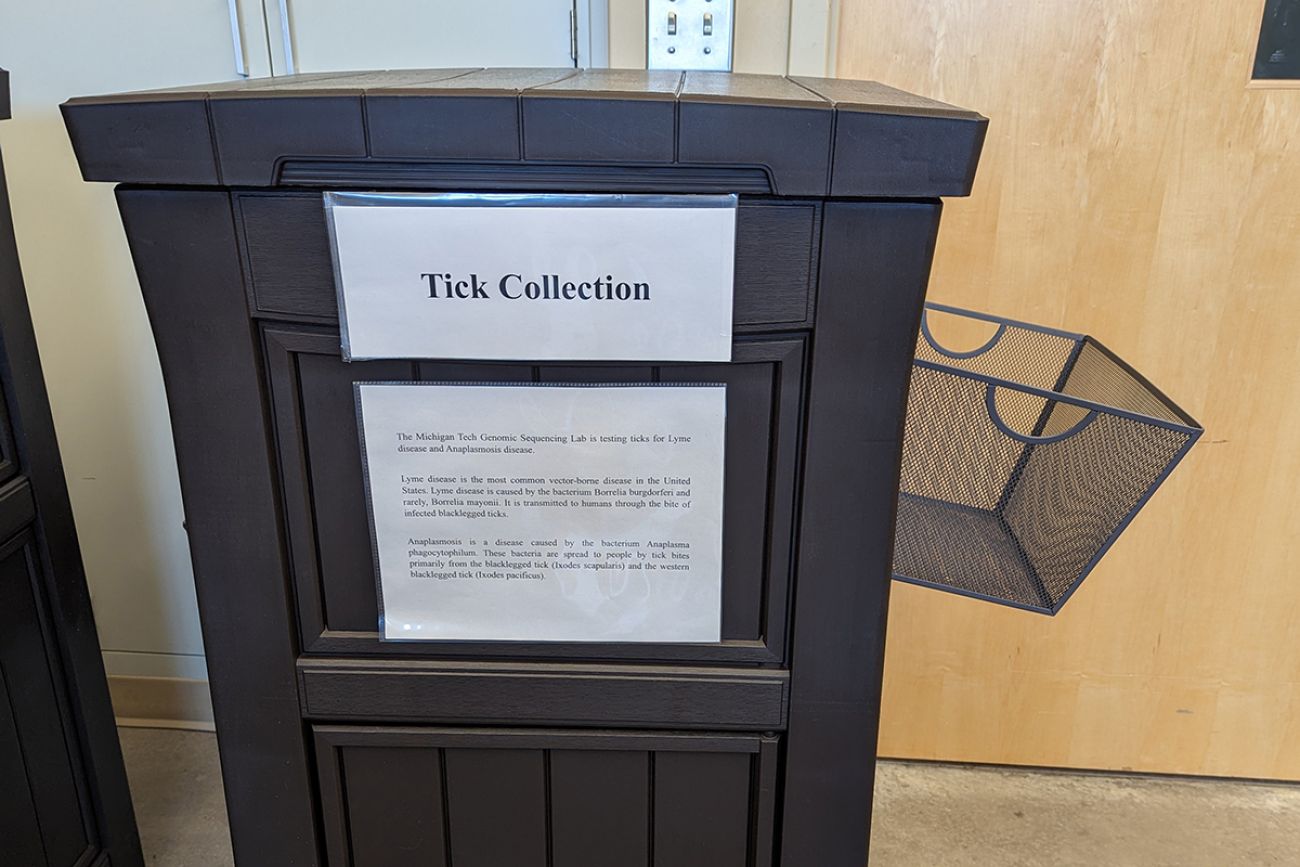Ticks in Michigan. What you need to know and how to protect yourself.

- As the weather breaks and temperatures rise, ticks become more active
- People develop Lyme disease most commonly from being bitten by blacklegged ticks, which can carry the bacteria that causes it.
- Researchers at Michigan Technological University have created dropboxes for locals to submit their tick samples to study
The prevalence of ticks in Michigan has increased over the years and climate change hasn’t helped.
Warmer winters have resulted in more active ticks, potentially extending the typical April-September season through some of the the winter, according to the Michigan Department of Health and Human Services.
While ticks are most active during warmer temperatures, especially in moist, wooded areas, they can also sometimes still be active on warmer winter days such as those when the temperature exceeds 40-degrees
Related:
- Mayfly season in Michigan: Two days of sex, bright lights for pesky bugs
- Ticks on rise in Michigan, so researchers get crafty to map the tiny terrors
- Meet the mosquito expert helping Michigan fight insect viruses
- A woman, a tick, and the fight in Michigan over Lyme disease
Ticks are external parasites that survive by attaching themselves to humans, birds and reptiles and feeding off their blood. Some ticks carry diseases, the most harmful being the bacterium borrelia burgdorferi which can cause Lyme disease if a person is bitten by an infected tick.
In 2021, there were 878 confirmed and probable reported cases of Lyme disease in Michigan, nearly double the 451 cases reported in 2020, according to MDHHS.
Protect yourself
It can be hard to tell if you’ve been on the receiving end of a tick’s bite. Like mosquitos, their bites are painless but if not properly monitored some tick bites can lead to long-lasting health problems.
Signs of Lyme disease can present as flu-like symptoms such as fever, fatigue, chills and rashes between three and 30 days after a tick bite, according to the CDC. A red or colored rash can appear within days after the bite of an infected tick. The center of the rash may clear as it enlarges, eventually resulting in a “bull’s-eye,” according to the agency.
If caught early, Lyme disease can be treated with antibiotics. However, if it goes untreated more serious symptoms like severe headaches, neck stiffness, facial palsy and nerve pain, can occur.
The best ways to protect yourself from ticks:
- Use insect repellent that has no more than 30 percent DEET, an active ingredient found in most insect repellants.
- Wear light clothing so you can easily detect a tick should it attach.
- Shower soon after coming from outside.
- Inspect your skin and remove ticks before going indoors.
While avoiding areas where ticks are most prevalent is one way to go, ticks can be found in many places so it may be difficult for people who enjoy outdoor activities like camping and hiking to never come in contact with ticks.
Common ticks in Michigan
There are over 20 species of ticks in Michigan but the most common are the American dog tick, blacklegged tick (a type which can trigger Lyme disease in people), lone star tick, woodchuck tick and brown dog tick.
The lone star tick isn’t as common in Michigan but they have established a strong presence in Berrien County, according to state data. Since then researchers have found that this tick can trigger a food allergy to red meat and potentially milk products.
The allergy is called alpha-gal syndrome which can be found in beef, pork, rabbit lamb, venison and other animal products like milk and gelatin.
Humans, without the allergy, typically can eat and drink products with alpha-gal in it but when the lone star tick bites a human, the tick injects the proteins into the person’s blood-stream which can cause someone to develop the allergy.
Save that tick!
If you do spot a tick on you, the CDC recommends removing it by pulling it off in an upward motion using tweezers and washing the site with soap and water.
Most people may flush the tick down the toilet after removing it but people can also send their ticks in to testing sites for further testing.
The Michigan Department of Health and Human services tests and identifies ticks through their tick identification and testing program. Michigan residents can pick up testing kits from their local health department to send to the MDHHS. The program only identifies the tick and sends the results back but individuals can talk to their healthcare provider if they have more specific questions, the Department advises.
Michigan Technological University has begun a crowdsourced tick collection effort as part of the MI-SAPPHIRE grant program for schools to expand their research on infectious diseases.
Residents in Houghton County, who have been bitten by a tick, can help with research by visiting the College of Forest Resources and Environmental Science building or the Great Lakes Research Center on MTU’s campus to pick up a vial from a dropbox and send the tick to the Genomic Sequencing Lab at MTU. Local vets, farms and the humane society are also collecting tick samples and sending them to the lab.
“We’re really trying to understand the potential zoonotic pathogens and Lyme disease is a big one,” said Kristin E. Brzeski, wildlife biologist and assistant professor at MTU.
The team of researchers use samples to study how pathogens that exist in wildlife impact human health. Once they receive a tick sample, they grind it up and test its DNA and RNA for various pathogens.
Last year they used a method called cloth flagging, in which they waved cloth on trees and the forest floor to collect ticks, but they weren’t able to collect enough to study. Brzeski is optimistic that this method of crowdsourcing will be more beneficial to their research.
“It’s very local right now but depending upon the success and utility of this maybe it would be something that could be expanded in the future,” she said.
Michigan Environment Watch
Michigan Environment Watch examines how public policy, industry, and other factors interact with the state’s trove of natural resources.
- See full coverage
- Subscribe
- Share tips and questions with Bridge environment reporter Kelly House
Michigan Environment Watch is made possible by generous financial support from:
Our generous Environment Watch underwriters encourage Bridge Michigan readers to also support civic journalism by becoming Bridge members. Please consider joining today.
See what new members are saying about why they donated to Bridge Michigan:
- “In order for this information to be accurate and unbiased it must be underwritten by its readers, not by special interests.” - Larry S.
- “Not many other media sources report on the topics Bridge does.” - Susan B.
- “Your journalism is outstanding and rare these days.” - Mark S.
If you want to ensure the future of nonpartisan, nonprofit Michigan journalism, please become a member today. You, too, will be asked why you donated and maybe we'll feature your quote next time!






